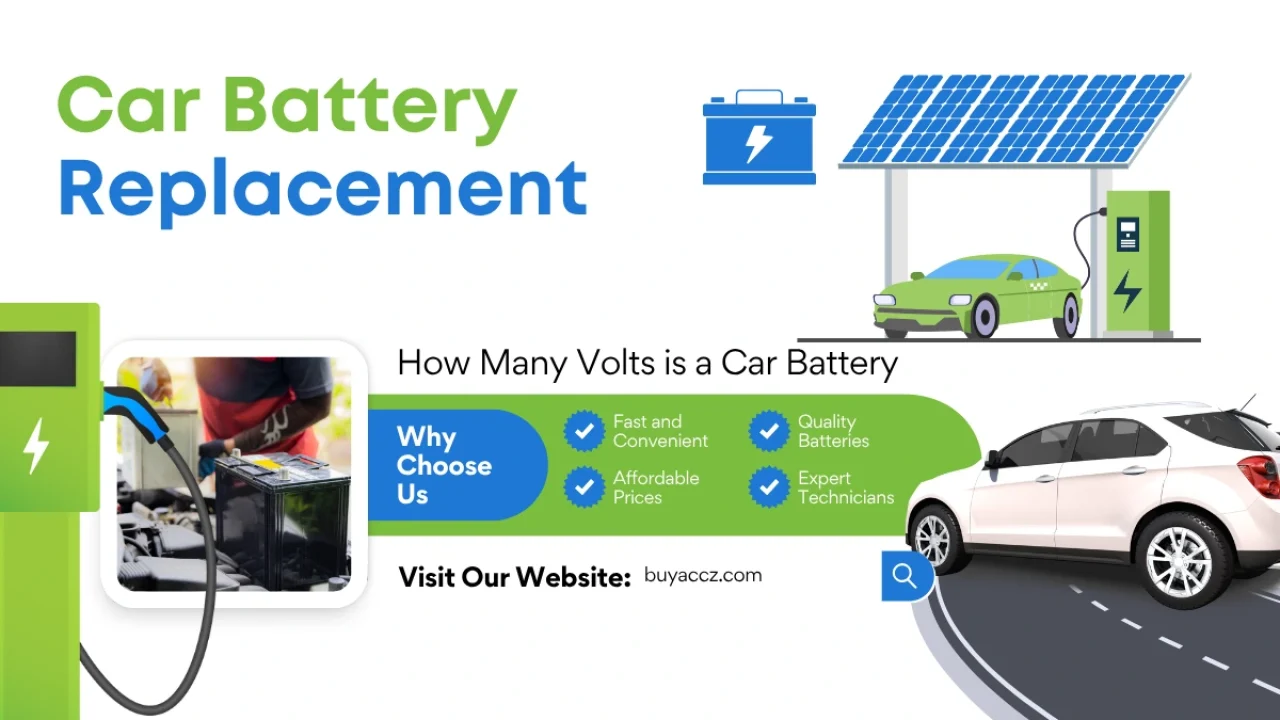Maintaining a vehicle’s performance and preventing electrical problems require an understanding of car battery voltage. A typical automobile battery is a 12-volt lead-acid battery, but the proper voltage reading can change based on the battery’s condition—whether it is fully charged or low voltage, the engine is running, or the battery charger is connected. Let’s examine car battery voltage, lifespan, and maintenance advice in more detail.
buyaccz.com website owner offers cash app at a cheap price, you can accept the offer if you want. thank you
✅LD Backup File & Phone Login Cash App Service✅
✅Gaming Payment Received & Cash App Accounts Available✅
✅ 4k/20k Single Profile Business Available
✅4k Limit (Normal/BTC Enable)
✅20k Limit (Normal/BTC Enable)
✅✅Direct Deposit On, Physical Card Active
Have Questions? Contact Us Anytime!
📨 Telegram: @buyaccz
📱 WhatsApp:
How Long Do Electric Car Batteries Last
Depending on usage and climate, electric car batteries can last anywhere from 8 to 15 years, which is different from a standard car battery. EV batteries have a substantially higher voltage than the 12 volts that a lead-acid battery in a gas-powered vehicle provides. Using a high-quality battery charger, avoiding extreme temperatures, and performing routine battery health checks all contribute to longer battery life and fewer problems with voltage drop.
Factors That Impact EV Battery Life
The lifespan of electric car batteries is influenced by a number of factors, including driving patterns, charging frequency, and electrical system efficiency. EV batteries store more power than a 12-volt DC battery found in conventional cars, but they still need to be maintained. Similar to a flat battery in a conventional car, an EV car battery voltage chart can experience electrical problems if its voltage drops too much.
Maintenance Tips for Electric Car Batteries
Avoid fully draining the battery and only use a charger that has been approved by the manufacturer. EV batteries need to be regularly inspected to ensure they are in good condition, just like a car battery from Walmart or Costco. Similar to keeping an eye on an automobile’s battery to avoid a dead battery situation, a voltage reading should be within the proper range to prevent power loss.
How Long Do Batteries Last in a Car
The average lifespan of a car battery is three to five years. Battery life is impacted by variables such as driving habits, engine start frequency, and climate. When the engine is off, a fully charged 12-volt battery should display about 12.6 volts. To prevent starter motor failure, you might need to replace your car battery if your voltage reading is less than 11 volts.
Low voltage is indicated by a slow starter motor, dim headlights, and frequent jump starts. It might be time for a new car battery if the voltage continues to drop even after using a car battery charger. You can find the ideal power source fast by looking for car batteries near me or by going to the car battery sections of Walmart.
Clean the positive terminal, maintain the vehicle’s electrical system, and refrain from turning off the engine while using accessories to prolong battery life. A dead battery can be avoided and the proper voltage for your car can be guaranteed by using a battery charger on a regular basis.
How Long Do Car Batteries Typically Last
Most standard car batteries last about 4 years in good condition if properly maintained. A fully charged battery will hold around 12.6 volts. Frequent short trips can cause a voltage drop because the alternator doesn’t get enough time to recharge the battery fully.
External Conditions Affecting Battery Longevity
Extreme cold slows down the car’s electrical system, while heat accelerates chemical reactions inside the lead-acid battery, reducing its lifespan. For this reason, it’s crucial to use a battery charger and perform routine voltage reading checks throughout the winter to keep your car operating efficiently.
How Long Do Car Batteries Usually Last
The typical battery lasts between three and five years. The voltage of the car battery should be checked to make sure it doesn’t drop to 10 volts or less, which is a sign of a flat battery. A healthy car s battery guarantees that the starter motor gets enough electricity to start the engine without any problems. Best offer service
Battery Lifespan and Driving Style
Because the alternator isn’t recharging the battery to the proper voltage, frequent short drives can cause the battery to die sooner. Longer drives lower the chance of electrical problems with the car’s electrical system and help keep it in good condition.
How to Check Battery Condition Regularly
To measure battery voltage, use a voltage reading device. A fully charged automobile battery should register between 12.7 and 14.7 volts when the engine is running and about 12.6 volts when it is not. Anything less than 11 volts may be a sign of low voltage that needs to be fixed right away or that the car battery needs to be replaced.
How Many Volts is a Fully Charged Car Battery
When the engine is off, a fully charged 12-volt battery normally reads between 12.6 and 12.8 volts. This voltage reading guarantees that the vehicle’s electrical system runs effectively and prevents problems. Even after using a battery charger, a lower voltage could indicate a decline in battery health.
Powering the starter motor, ignition, and accessories requires the proper voltage. Starting issues, flat battery situations, and possible damage to electrical systems can all result from a voltage drop. For the best engine performance, always make sure your car’s battery voltage is maintained at the right level. get more
How Many Volts is a Car Battery When Fully Charged
When fully charged and disconnected from the engine, a normal car battery in good condition will display 12.6–12.8 volts. The alternator raises the voltage to about 14 volts while the vehicle’s engine is running. This guarantees that there is enough electric current flowing through all electrical systems.
Voltage Differences in Conditions
The voltage reading may slightly decrease when the engine is off and the accessories are on, but it should still be higher than 12 volts. The battery charger should be used to restore good condition and prevent a dead battery if the voltage drops to 11 volts or less.
For optimal readings, check your car’s battery voltage chart on a regular basis. To avoid electrical problems or damage to the starter motor, a low voltage issue should be resolved as soon as possible. Maintenance is essential, regardless of whether you have a Walmart or Costco car battery.
How Many Amps is a 12 Volt Car Battery
- In a typical car s electrical system, a 12-volt battery typically has 400–600 cold-cranking amps (CCA). The electric current that the battery can provide to start the vehicle’s engine in cold weather is indicated by this rating. Colder climates typically have higher CCA ratings.
- The power required to start the engine is supplied by amps to the starter motor. Even with a high CCA, a low voltage battery may still malfunction. Consistent amp output can be maintained by keeping the battery voltage within the proper range
- When inspecting amplifiers, always take precautions. The safest course of action is to use a battery charger that has an amp display. Make sure the battery’s condition corresponds with the requirements of your car’s electrical systems, regardless of whether it’s a Walmart or Costco battery. Buying offer
How Many Volt is a Car Battery
- Standard Voltage in Most Vehicles
Most standard car batteries are 12-volt lead-acid batteries, but the actual voltage reading can range between 12.4 and 12.8 volts when fully charged. When running, the alternator should maintain 14 volts for proper car engine electrical system performance.
- When Voltage Drops Below Normal
A reading below 11 volts is a sign of a flat battery or low voltage issue. This can cause electrical issues, difficulty starting the engine, and may require car battery replacement.
- Ensuring Correct Voltage Over Time
Regular maintenance, cleaning the positive terminal, and using a car battery charger can keep the battery voltage in the ideal range. Search for car battery near me if you need a replacement to keep your power source in good condition. buyaccz.com service provider
FAQ – How Many Volts is a Car Battery
1. How many volts is a fully charged car battery?
A fully charged standard car battery should read between 12.6 and 12.8 volts with the engine off. When the car engine is running, the alternator increases this to about 14 volts to power the car’s electrical system.
2. What voltage is too low for a car battery?
Anything below 11 volts is considered low voltage for a 12-volt battery and can lead to electrical issues or a dead battery. At this point, a car battery charger is recommended.
3. Can a car battery be over 14 volts?
Yes, but only while the alternator is charging. If the voltage reading exceeds 14.7 volts for a long period, it could indicate a car’s electrical system problem.
4. How many volts is a flat battery?
A flat battery typically reads 10 volts or less, meaning it no longer has enough power to start the engine or run the starter motor.
5. How do I check my car battery voltage?
Use a digital multimeter or a battery charger with a built-in display to get an accurate voltage reading. Even walmart car batteries and costco car batteries need regular checks to maintain good condition.
6. How many volts should a car battery have when running?
When the engine is running, the correct voltage should be between 13.7 and 14.7 volts to keep the vehicle’s electrical systems powered and the battery charged.
7. Can a car start with 12 volts?
Yes, but ideally, it should be at 12.6 volts for a fully charged battery. At exactly 12 volts, the battery is only about 50% charged, which could cause starter motor strain.






